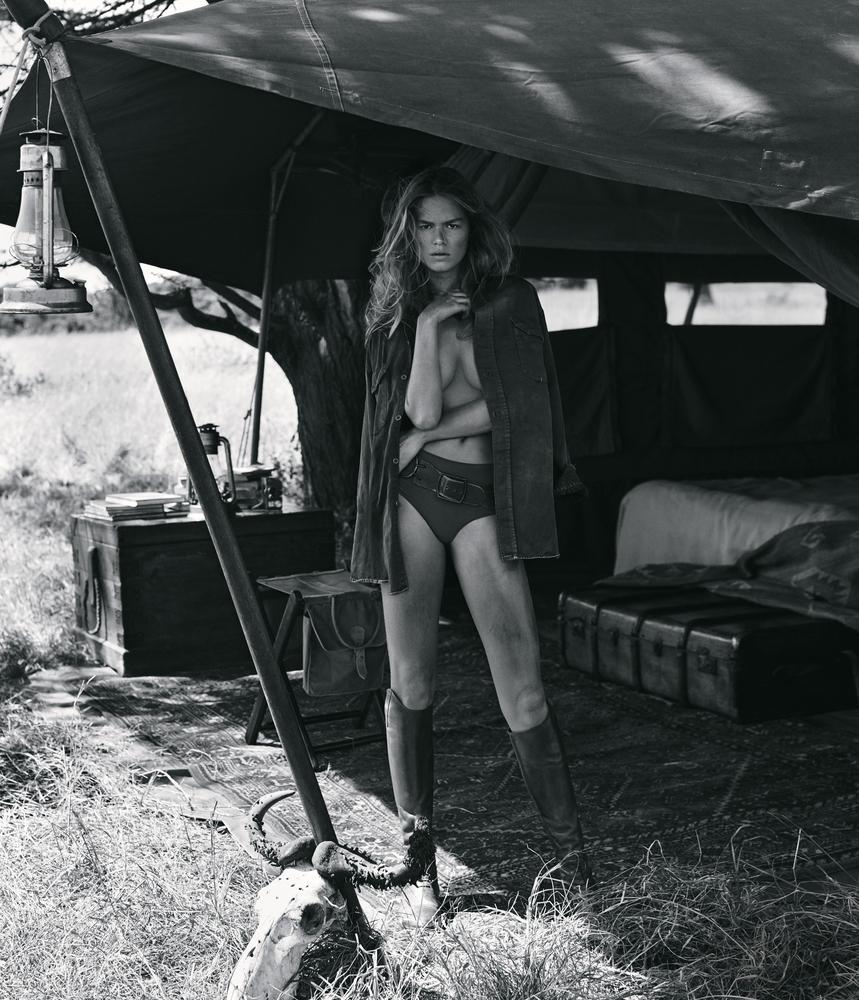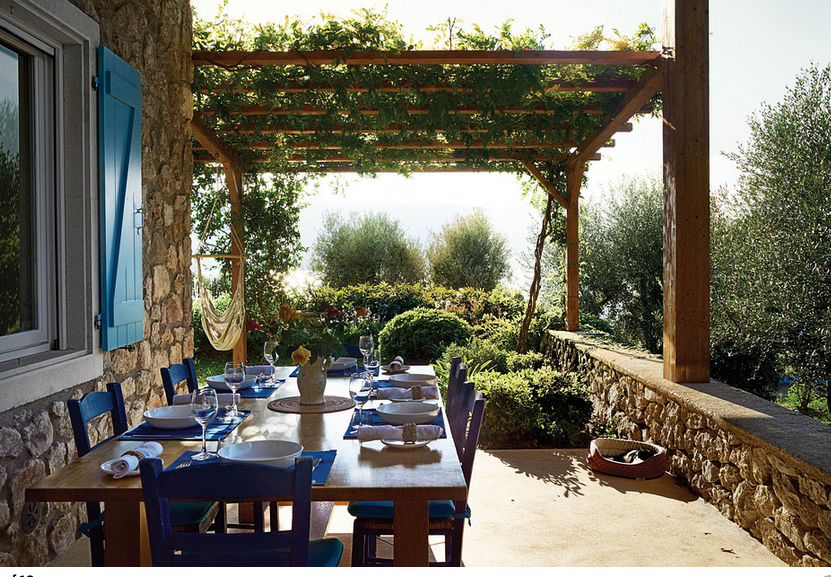Sleeping with Jeff Koons
 A cool piece in the WSJ's OFF DUTY that discusses the shift in hotels' relationships with high end art. Hotels are beginning to acquire big names in the art world to keep up with lifestyle marketing trends, with a focus on continuingly crafting memorable stays for their guests, a "daring approach" as explained by Donna Rosen, a trustee at New York’s Whitney Museum. Read more, here.
A cool piece in the WSJ's OFF DUTY that discusses the shift in hotels' relationships with high end art. Hotels are beginning to acquire big names in the art world to keep up with lifestyle marketing trends, with a focus on continuingly crafting memorable stays for their guests, a "daring approach" as explained by Donna Rosen, a trustee at New York’s Whitney Museum. Read more, here.
Ionian Islands
 I stopped in my tracks when I saw this portrait of Charlotte Stockdale and Marc Newson on my Instagram feed, as highlighted by WSJ Magazine. Between the photograph of the insanely creative duo and the chic rattan garden furniture, I knew this had to be good material.
I stopped in my tracks when I saw this portrait of Charlotte Stockdale and Marc Newson on my Instagram feed, as highlighted by WSJ Magazine. Between the photograph of the insanely creative duo and the chic rattan garden furniture, I knew this had to be good material.
Charlotte Stockdale, is just half of the impossibly cool couple - a model and stylist (she consults for Karl Lagerfeld), style editor for Jo Malone London and is the fashion director of art magazine Garage. On her right hand is her Australian hubby, Marc Newson. Heard of a little thing called the Apple Watch? Well, he is the gent behind the product's design, not to mention his design of this sumptuous bottle of Dom, the interior design of Qantas' First Class Lounge in Sydney, this body jet pack and many, many other insanely epic products. They are a force to be known.
In addition to their influential contributions to modern society, they have bestowed us with a glimpse into their custom home sitting pretty in Greece's Ionian islands. Outside of this tech enabled, art saturated revolving reality of theirs, they retreat to a stone abode surrounded by radicchio and okra that grow in concert with blossoming orchards and night-blooming jasmine. It's a paradise I truly lust for. Read and see more, here.
'A Tuscan Dream' indeed.
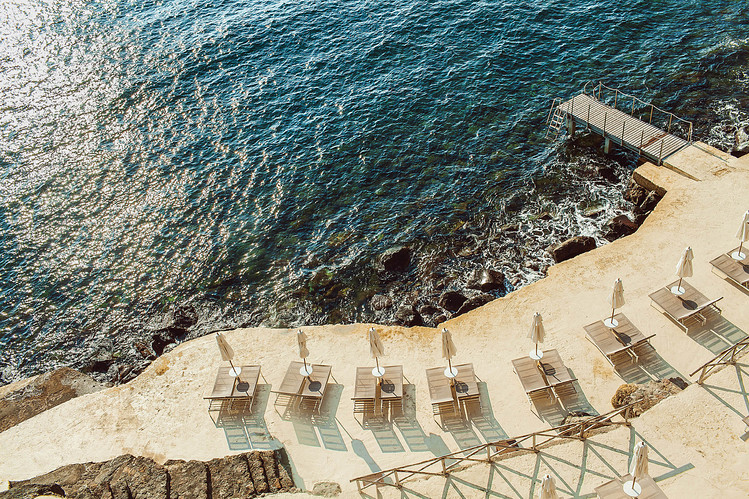 The desktop on my work computer has for years, always been a lustrous scene at Il Pellicano, one of my dream destinations. In fact, one of my first C&C posts was on this tuscan gem (see here). I love the history behind its inception, the magical romance it never ceases to illustrate in both words and illustration, and the modern day allure it continues to exude despite being a fixture of the 60's jet-set culture. I was so pleased to see it featured in the WSJ Magazine. Slip into the lens of Marie-Louise Sciò, the hotel's Creative Director, by reading here.
The desktop on my work computer has for years, always been a lustrous scene at Il Pellicano, one of my dream destinations. In fact, one of my first C&C posts was on this tuscan gem (see here). I love the history behind its inception, the magical romance it never ceases to illustrate in both words and illustration, and the modern day allure it continues to exude despite being a fixture of the 60's jet-set culture. I was so pleased to see it featured in the WSJ Magazine. Slip into the lens of Marie-Louise Sciò, the hotel's Creative Director, by reading here.
'Fall 50'
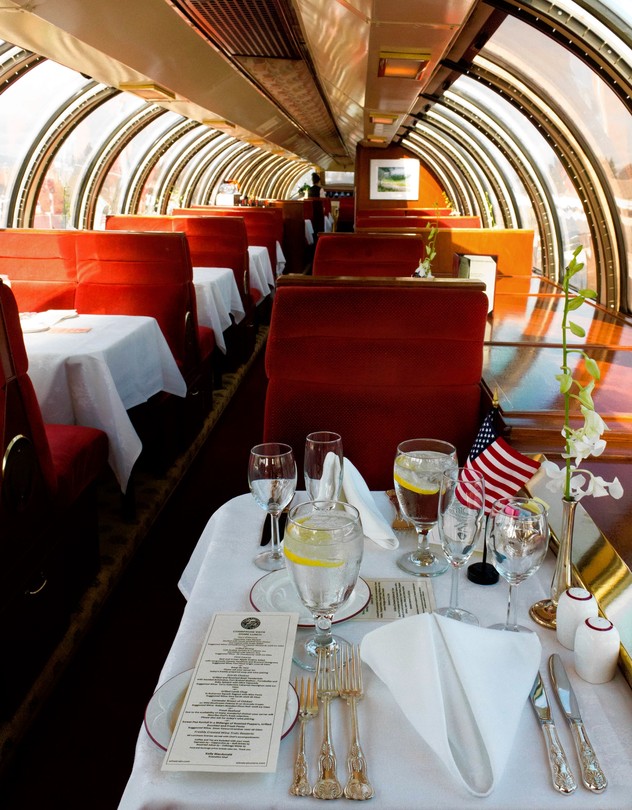 The WSJ published their 'Fall 50' in the weekend Off Duty issue which is comprised of 50 ideas for autumn adventures, gadgets, and looks that will aid in maximizing the season. Among them? Corduroy for men, cat eyes for women, apple cider cocktails for all, a jaunt to New Orleans and a ride on the Napa Valley dinner train (above). As the article examines the renaissance of the modern day "food train", it points to a few in the U.S. that are worthy of experiencing and are up to snuff even for the most discerning foodie. The Napa Valley dinner train has always caught my eye during trips to wine country, however it didn't truly peak my interest until now. How fun! See more, here.
The WSJ published their 'Fall 50' in the weekend Off Duty issue which is comprised of 50 ideas for autumn adventures, gadgets, and looks that will aid in maximizing the season. Among them? Corduroy for men, cat eyes for women, apple cider cocktails for all, a jaunt to New Orleans and a ride on the Napa Valley dinner train (above). As the article examines the renaissance of the modern day "food train", it points to a few in the U.S. that are worthy of experiencing and are up to snuff even for the most discerning foodie. The Napa Valley dinner train has always caught my eye during trips to wine country, however it didn't truly peak my interest until now. How fun! See more, here.
The Alps, You Say?
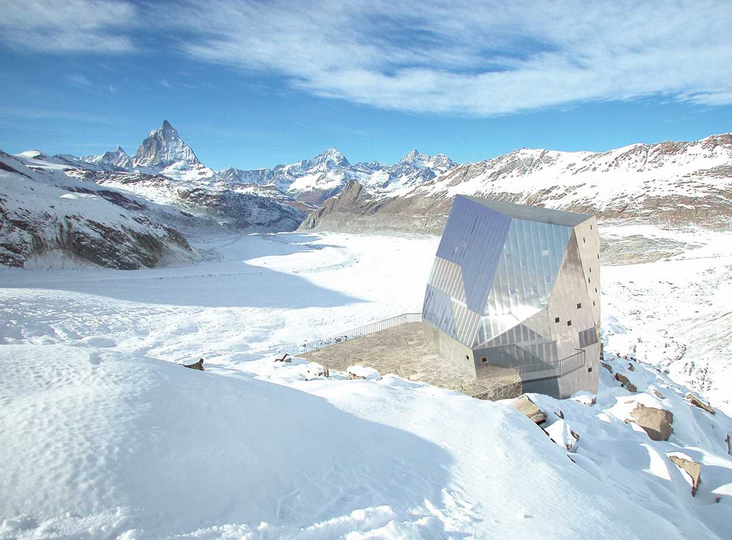 ...why, yes. The WSJ Off-Duty ran a piece on the most hard to reach, enticing hotels around the world. Above, we present to you, the Monte Rosa Hütte, an architectural landmark along one of Switzerland's most notorious mountain groups and, worthy of noting, sitting pretty next to a majestic cluster of glaciers. The catch? (But of course there is a catch)! It's a four-hour climb from the local train station - via hiking trails in the summer months, or alpine touring in the winter. The article notes that a guide is recommended for the less experienced - certainly not intimidating or anything...Watch this arrival for visual proof.
The hotel, a modern, energy-independent structure 2883 m. above sea level, is the result of a collaboration between the Swiss Federal Institute of Technology in Zurich and the Swiss Alpine Club. Be sure to view the other contenders that made WSJ's selection, here.
...why, yes. The WSJ Off-Duty ran a piece on the most hard to reach, enticing hotels around the world. Above, we present to you, the Monte Rosa Hütte, an architectural landmark along one of Switzerland's most notorious mountain groups and, worthy of noting, sitting pretty next to a majestic cluster of glaciers. The catch? (But of course there is a catch)! It's a four-hour climb from the local train station - via hiking trails in the summer months, or alpine touring in the winter. The article notes that a guide is recommended for the less experienced - certainly not intimidating or anything...Watch this arrival for visual proof.
The hotel, a modern, energy-independent structure 2883 m. above sea level, is the result of a collaboration between the Swiss Federal Institute of Technology in Zurich and the Swiss Alpine Club. Be sure to view the other contenders that made WSJ's selection, here.
Photograph, via.
Cowboy Moguls
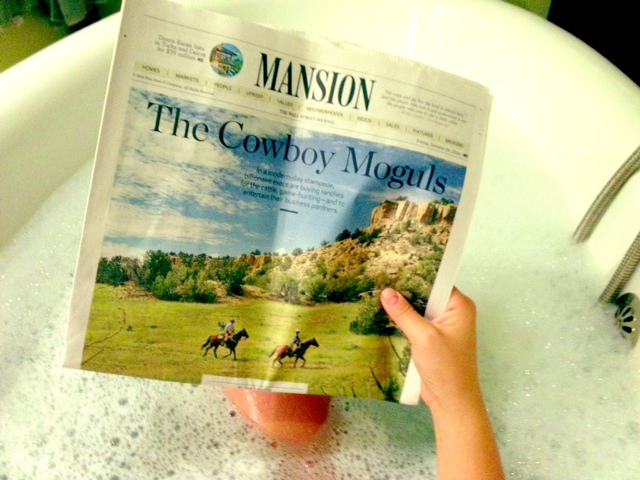 I caught up on Friday's WSJ accompanied by an epsom salt bath and tea. I was especially drawn to the article discussing the strong demand for mega ranches in the U.S. - those with typically over 100,000 total acres (with often a substantial portion of deeded acreage) listed from roughly $10 million to $175 million. (Find your mental map of the U.S. and think about New Mexico - this is where the 'cowboy moguls' are mostly flocking to). In the fiscal year of 2014, the value of U.S. pasture land normally grazed by livestock rose 11%, making property with revenue streams highly desirable. With drought conditions slowly on the upswing, higher cattle prices, a boom in the oil & gas industry and attractive interest rates on mortgages, ranches that have been sitting on the market are starting to sell.
In 2012 for instance, Billionaire Stan Kroenke, (owner of St. Louis Rams and soccer's Arsenal F.C), scooped up the 124,000-acre Broken O Ranch in Montana for a cool $132.5 million. Head due south, and D.R. Horton (founder of America's largest home building company) purchased Great Western Ranch in New Mexico for over $59.5 million, where he hopes to use the 293,000 acres as a landscape to entertain clients and made available for use by his 'key employees'. Despite the alluring qualities of entertaining and sporting on the majestically vast land, there is certainly keen interest in investing in an asset that can aid in profitability, whether it may be fracking and mineral rights, livestock operations or fees from wildlife hunting. Those billionaires might be on to something...
I caught up on Friday's WSJ accompanied by an epsom salt bath and tea. I was especially drawn to the article discussing the strong demand for mega ranches in the U.S. - those with typically over 100,000 total acres (with often a substantial portion of deeded acreage) listed from roughly $10 million to $175 million. (Find your mental map of the U.S. and think about New Mexico - this is where the 'cowboy moguls' are mostly flocking to). In the fiscal year of 2014, the value of U.S. pasture land normally grazed by livestock rose 11%, making property with revenue streams highly desirable. With drought conditions slowly on the upswing, higher cattle prices, a boom in the oil & gas industry and attractive interest rates on mortgages, ranches that have been sitting on the market are starting to sell.
In 2012 for instance, Billionaire Stan Kroenke, (owner of St. Louis Rams and soccer's Arsenal F.C), scooped up the 124,000-acre Broken O Ranch in Montana for a cool $132.5 million. Head due south, and D.R. Horton (founder of America's largest home building company) purchased Great Western Ranch in New Mexico for over $59.5 million, where he hopes to use the 293,000 acres as a landscape to entertain clients and made available for use by his 'key employees'. Despite the alluring qualities of entertaining and sporting on the majestically vast land, there is certainly keen interest in investing in an asset that can aid in profitability, whether it may be fracking and mineral rights, livestock operations or fees from wildlife hunting. Those billionaires might be on to something...
Read on, here.
On the Coast: Rugged Beauty
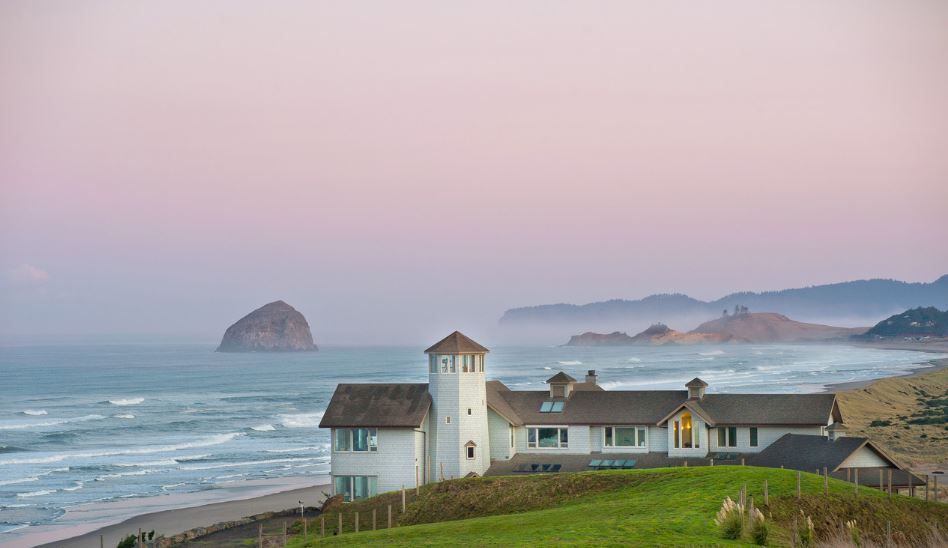

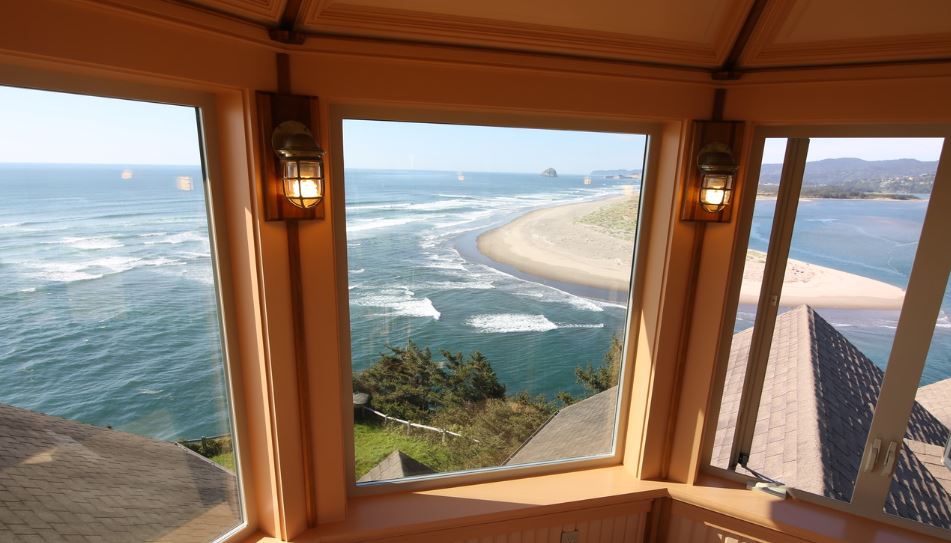
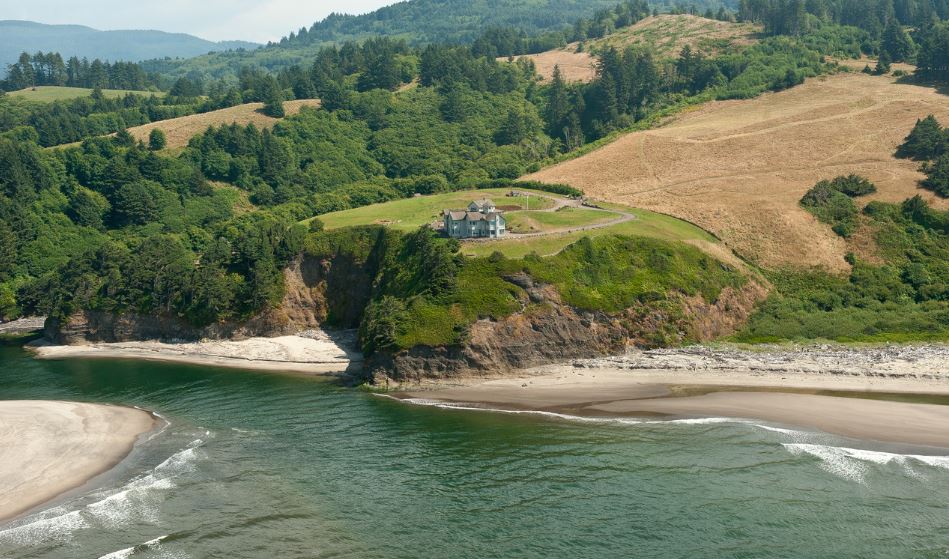 I've been captivated by the Oregon Coast for quite some time and it remains on my bucket list of domestic travel destinations. This home in Cloverdale, Oregon will be up for auction in two short weeks. Although there are several things I would do differently with the property, you can't ignore her rugged beauty & bliss - all 25 acres! See more here.
I've been captivated by the Oregon Coast for quite some time and it remains on my bucket list of domestic travel destinations. This home in Cloverdale, Oregon will be up for auction in two short weeks. Although there are several things I would do differently with the property, you can't ignore her rugged beauty & bliss - all 25 acres! See more here.
In the Dunes of the Cape: Saving Modernity
 "For nearly four decades, the area was a haven where two different sets of designers—European modernists and local nonconformists—found common ground, working hard during the daytime, then repairing to each other's houses for cocktails and bonfires at night." - Carol Kino reports from the WSJ
I really enjoyed reading this article in the WSJ about the quest to save Cape Cod's vast array of avant-garde homes. Having gone to high school in Massachusetts, I spent over half my teenage years on the Cape and consider the landscape to have had a deep imprint on those indelible years. What I didn't know, is that the Cape plays host to hundreds of modernist homes (like the "Hatch House" above). The article chronicles the efforts of architect Peter McMahon who is championing to save Cape Cod's endangered midcentury modern houses through his nonprofit Cape Code Modernist House Trust. The homes, as McMahon explains, were built on the cheap, using materials such as plywood, salvaged lumber and plate glass. Think: design on a dime with Frank Lloyd Wright, subtracting any formal study of architecture. Many of the builders lacked formal schooling and experimenting was often a key ingredient to the designs.
"For nearly four decades, the area was a haven where two different sets of designers—European modernists and local nonconformists—found common ground, working hard during the daytime, then repairing to each other's houses for cocktails and bonfires at night." - Carol Kino reports from the WSJ
I really enjoyed reading this article in the WSJ about the quest to save Cape Cod's vast array of avant-garde homes. Having gone to high school in Massachusetts, I spent over half my teenage years on the Cape and consider the landscape to have had a deep imprint on those indelible years. What I didn't know, is that the Cape plays host to hundreds of modernist homes (like the "Hatch House" above). The article chronicles the efforts of architect Peter McMahon who is championing to save Cape Cod's endangered midcentury modern houses through his nonprofit Cape Code Modernist House Trust. The homes, as McMahon explains, were built on the cheap, using materials such as plywood, salvaged lumber and plate glass. Think: design on a dime with Frank Lloyd Wright, subtracting any formal study of architecture. Many of the builders lacked formal schooling and experimenting was often a key ingredient to the designs.
As part of a shift in policy dating back many years ago, several of the modernist houses had been condemned and derelict. When the Cape Cod National Seashore absorbed a vast array of land containing some of these houses, budget constraints led many of the houses to demolition. Quickly, these houses were disappearing. Luckily, McMahon swooped in at the right time, taking on many restoration projects and registering many of the houses with the National Register of Historic Places. The houses are apparently tucked away in the woody dunes of the cape, little gems that tell a story of life, design and romance after WWII.
Read the article here: http://online.wsj.com/articles/saving-modernism-in-cape-cod-1399492974?tesla=y



